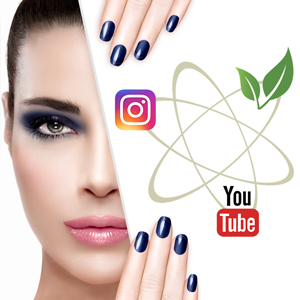Nature-inspired products, social influencers, technology, indie brands, millennials, and the rise of gen z are key trends shaping the U.S. cosmetics and toiletries market today. Recording solid growth of 3% in 2016, the ever-evolving beauty market is poised for another year of success.
As we begin our research for the 43rd edition of Kline’s Cosmetics & Toiletries USA report, encompassing five product classes and 17 product categories, we take note of important developments and highlights.
Naturals – the wavemakers of beauty: The natural personal care market remains a powerful force, with sales advancing at over 9%. Naturally positioned and nature-inspired products are making waves across categories, meeting the needs of increasingly demanding consumers that are looking for transparency and sustainability as the definition of natural remains unregulated in the market. Retailers like Target are responding to this growing concern by announcing the phasing out select harmful ingredients by 2020. However, which brands are truly natural vs. natural-inspired? What percentage of the U.S. market is comprised of truly natural brands?
Influencers – beauty’s new game-changers: The power of social media has allowed marketers to rapidly gain visibility and boost sales through collaborations with influencers who move the market through YouTube and Instagram followers. Names like Jaclyn Hill and Katheen Lights, collectively with over 9 million Instagram followers, influence the most powerful buyers of beauty—millennials and gen Z. However, is the dynamic of these influencers shifting as consumer trust becomes a challenge with sponsored content?
Beauty’s most special retailers: The expanding cosmetics specialty and vertically integrated stores, such as Ulta, Sephora, Bluemercury, and NYX, are key in creating the ultimate shopper experience by setting trends, providing personalized services in digital formats, and offering open-play environments. However, the direct channel is the fastest growing as dollars spent on beauty products continue to shift online. E-commerce beauty sales, comprising of online purchases from brick-and-mortar stores, striving exclusive online brands, such as Glossier, and curators of products, such as Peach & Lily, continue to propel changes in the retailing space. However, e-commerce’s biggest titan is also making a market in beauty. Amazon, with a presence in luxury and mass beauty, has created a platform on its website dedicated to professional skin care products, and rumor has it the online retailer is potentially partnering with beauty e-destination Violet Grey to lure more luxury beauty brands to this space.
To learn about the many more factors impacting the beauty market in 2017, please refer to our Cosmetics & Toiletries USA report coming first/second quarter 2018. We will also be exploring a more in-depth analysis of the dynamic market for natural and organic beauty in our upcoming Natural Personal Care: Market Analysis and Opportunities report, expected to be published fourth quarter 2017.
NEW REPORT: Explore all forms of facial masks available in the United States with our Facial Masks in the United States report.

